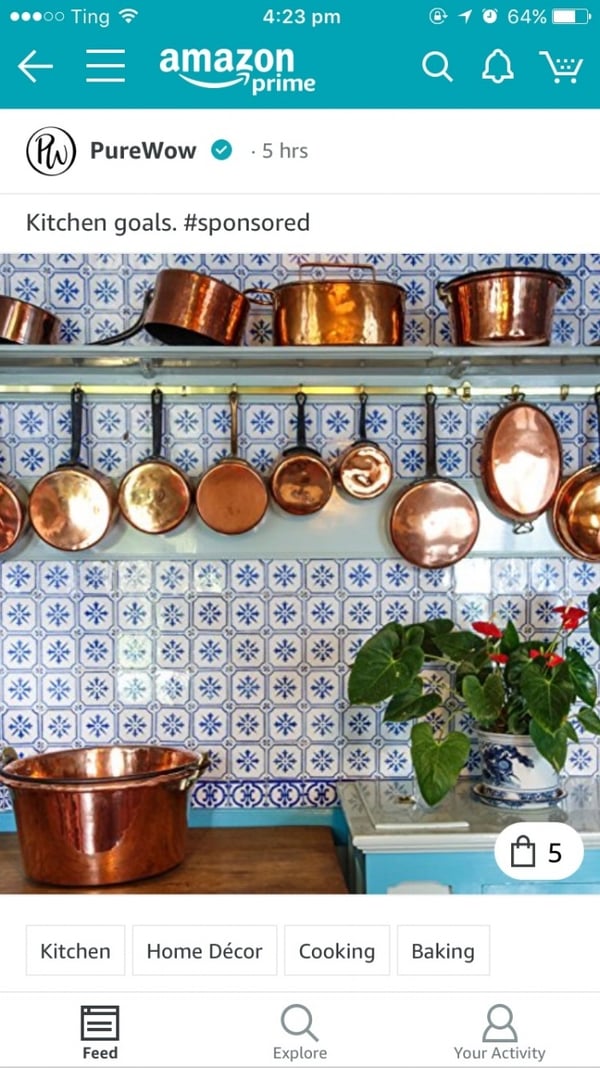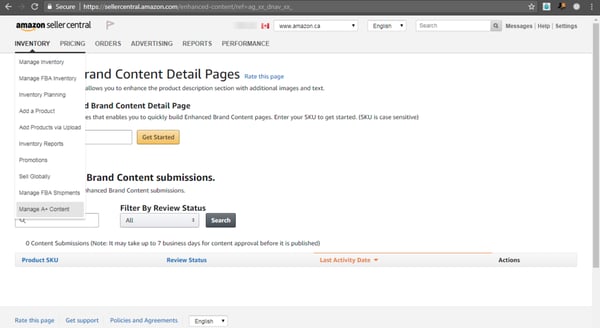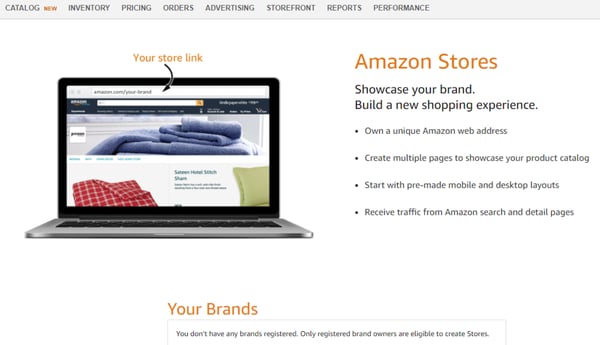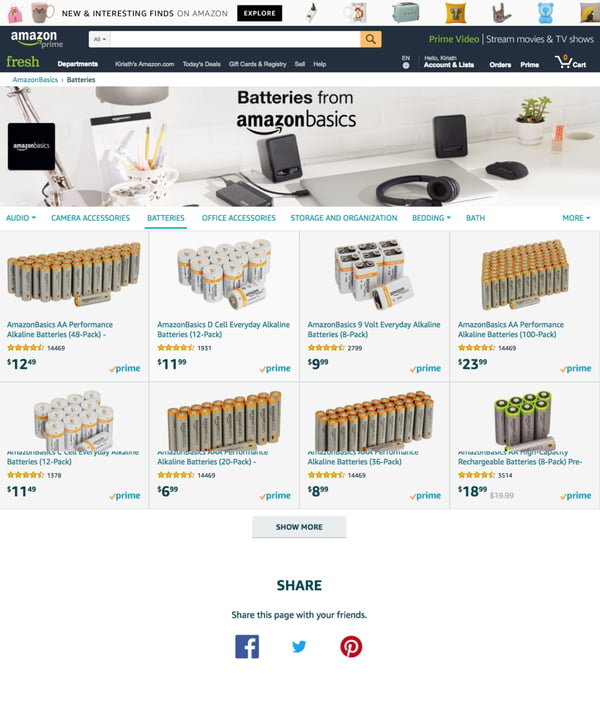Here's my curated round-up of the top news this week that impacts brands selling on the Amazon platform. Make sure you hit "Follow" to get notified of my future posts!
'Spark' makes Amazon more social

This new feature launched in Amazon’s mobile shopping app allows users to browse and shop directly from an image. This is Amazon’s take on the "shoppable" images technology that social networks like Pinterest and Instagram have rolled out in recent months. The tagline for Spark is “Find, follow & share your interests.” With a familiar-looking social feed, Amazon is looking to make its core app more social, and by extension, help Amazon become a platform for product discovery.
What does this mean for brands?
Amazon has been testing and investing in more technology and programs that are designed to facilitate product discovery. Already, 50% of consumers use Amazon as the first place to search for products that they already have “purchase intent” for. But what Amazon is not naturally designed for is discovering new products. So, investing in discovery and influencer programs will help Amazon put products in front of customers that they aren’t even aware of yet.

Influencers can use this technology to easily share what they’ve bought (think of those super popular “shopping haul” videos on YouTube), or even in more everyday situations where you want to know what brand of shoe someone on the street is wearing and if it’s still available on Amazon. Amazon customers can follow topics or even other customers with whom they share common interests.
Amazon has invited paid influencers and bloggers to post on Spark. When setting up my own Spark account, I could follow established category mavens like Purewow. For a new feature, it’s surprisingly well developed since it has been in beta for a few months now. There is already quite a bit of social activity going on there.
Amazon buys 3rd Party Marketplace Seller inventory
Amazon has started to approach U.S. merchants by email offering to buy their stock at full listed price in order to resell it overseas.
Amazon is aggressively expanding to international markets (Australia and South Korea recently having been put on the map), and needs to shore up its product assortment in order to launch and thrive in these markets. Purchasing inventory at full price is a guaranteed way of delivering on their brand value of selection, even if it loses in the short term on profitability.
What’s the implication for brands and merchants? It’s definitely a win for now, to have Amazon take on the cost, risk, and compliance requirements to sell products in international markets. Some detractors have suggested that the effort will simply provide Amazon with more access to product sales data. But they already have that now, don’t they?
Amazon Business Now Serves More Than One Million Business Customers in the United States
According to a press release today, Amazon Business (Amazon’s B2B marketplace) “...now has more than one million business customers since launching in April of 2015, offering business-only pricing on millions of products and access to more than 85,000 business sellers.”
Amazon Business is a platform which serves procurement teams in business, corporate, and government entities. For brands who have products that are used in a corporate, education, or industrial setting, it’s a no-brainer to enroll in the program. It costs nothing extra and can create access to buyers that previously would have to use an exception process to buy your products. Read our article about Amazon for Business to learn more.
Enhanced brand content now available for sellers on Amazon.ca
Until this week, Enhanced Brand Content and A+ pages were not available to brands selling on the Amazon Canada marketplace. Now these sellers can access richer, media-driven content on their product display pages.

Amazon updates “Brand Stores”
Last month, Amazon refreshed its Amazon Stores in a big way; these were previously only available to Vendors on the AMS platform. Last week, Amazon started inviting 3rd Party Merchants to use Amazon Stores.

Per Amazon: “You can build a new shopping experience to showcase your brand and drive traffic to a unique Amazon webpage. You can create multiple pages on your store for your product catalog, with mobile-friendly templates to add new products and tell a story about your brand.”
 Above: a category-level store page for AmazonBasics batteries.
Above: a category-level store page for AmazonBasics batteries.
So how do these brand pages show up in search on Amazon?
-
When a user clicks on the brand name on a product display page, it can direct to the brand page. Previously, the user was directed to a very basic brand page or simply a ‘storefront’ landing page with all products that the brand has available on Amazon.
-
Theoretically, in Headline Search ads. Amazon doesn’t appear to be using this approach for their own product categories.
What does this mean for brands?
-
What’s new is that 3rd Party Marketplace Sellers now have access to this feature, it’s not just restricted to Vendors. Note--it’s only available for brands registered in the new Brand Registry.
-
Brands can now have multiple URLs and additional brand pages. So, if you sell in multiple categories or have some other kind of collection approach in your assortment (e.g., teens, kids, or maternity clothing), you can create your own navigation with links to category pages.
-
Rich media is now supported on these brand pages. Brands no longer have to include all their rich, brand-level content on individual product pages using Enhanced Brand Content or A+ page features. Previously, this rich media would not have been discovered by consumers unless it was on the product page. Brands can now include their brand-level or collection-level content instead of having to take up space on product pages.
-
Brands who are early to adopt these new branding initiatives will see a competitive advantage in the short term. Amazon also has a history of rolling out these types of programs for free initially, and then charging for them (Lightning Deals and A+ pages being two examples of this).
You can review a sample Amazon Store for the AmazonBasics brand here.
So that's my take on the most pertinent news this week for brands selling on Amazon. We'll be publishing an article soon about Amazon Store pages, so be sure to subscribe to the Bobsled Marketing newsletter to get notified when that post goes live!
.png)
